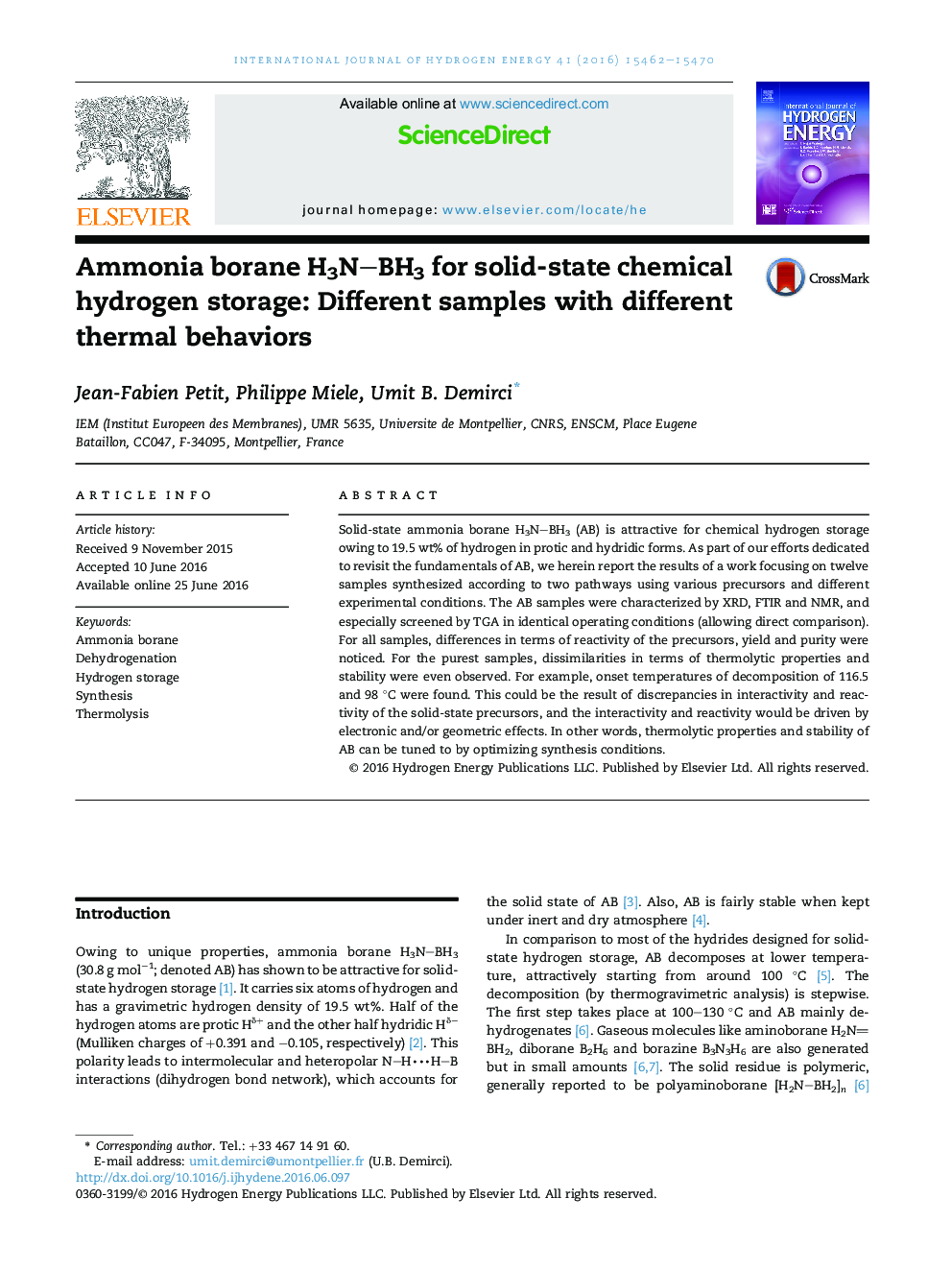| Article ID | Journal | Published Year | Pages | File Type |
|---|---|---|---|---|
| 1270426 | International Journal of Hydrogen Energy | 2016 | 9 Pages |
•Twelve different samples of ammonia borane H3BNH3 were synthesized.•They were prepared in differential experimental conditions according to two paths.•Differences in reactivity of the precursors, yield and purity were noticed.•For pure samples, differences in thermolytic properties/stability were observed.•For example, onset temperatures of decomposition of 116.5 and 98 °C were found.
Solid-state ammonia borane H3NBH3 (AB) is attractive for chemical hydrogen storage owing to 19.5 wt% of hydrogen in protic and hydridic forms. As part of our efforts dedicated to revisit the fundamentals of AB, we herein report the results of a work focusing on twelve samples synthesized according to two pathways using various precursors and different experimental conditions. The AB samples were characterized by XRD, FTIR and NMR, and especially screened by TGA in identical operating conditions (allowing direct comparison). For all samples, differences in terms of reactivity of the precursors, yield and purity were noticed. For the purest samples, dissimilarities in terms of thermolytic properties and stability were even observed. For example, onset temperatures of decomposition of 116.5 and 98 °C were found. This could be the result of discrepancies in interactivity and reactivity of the solid-state precursors, and the interactivity and reactivity would be driven by electronic and/or geometric effects. In other words, thermolytic properties and stability of AB can be tuned to by optimizing synthesis conditions.
